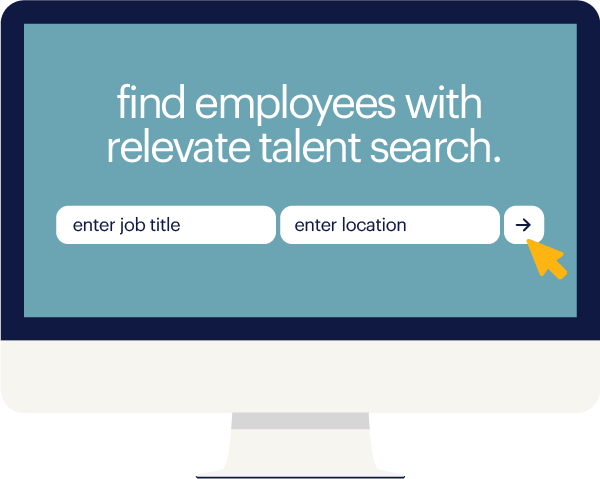If you're looking to hire a molecular or cell biologist in 2020, you'll have your work cut out for you. Recent data from labor-insights provider Burning Glass found there were approximately 3,400 job postings for cell biologists, and 1,079 for molecular biologists in the past 12 months.
Those numbers are definitely daunting, given that these roles require highly specialized professionals. And in today's competitive market, where top talent receive a job offer in as little as 10 days, you'll need to not only find a way to consistently attract the best candidates out there, but do it in a highly compressed time frame. But how?
Here's a simple checklist to use when seeking the best candidates to fill your molecular and cell biologist openings:
1. optimize your hiring processReady to strengthen your recruiting and bring elite biologists to your organization? Read on for actionable steps to take your strategy to the next level.
1. speed up your hiring process
Given the important roles molecular and cell biologists play as key scientific advisors at your organization, you can't afford to have your open positions stay that way for long. First, take a look at your internal hiring processes for potential inefficiencies. Ask yourself questions like:
-
Does the hiring panel agree on the skill sets and experience required of the right candidates?
-
Are we taking too long to engage with interested, qualified candidates?
-
Are candidates jumping ship during the hiring process because they've accepted another offer?
-
Is our team delaying the decision-making process, by either requesting additional interview rounds or wanting to meet even more candidates?
If you answered yes to any of these questions, then you need to tweak your hiring process to make sure it's efficient. Use the diagram below to identify key areas where your hiring process could be improved.
2. develop a competitive compensation package
To attract the highly educated, highly specialized applicants you want to hire, you'll need to be prepared to offer a compensation package that's simply too good to pass up. Yes, a competitive salary has always been the foundation of a strong job offer — but in today's job market, where salary data has become increasingly transparent, candidates know their value and what it costs to attract them.
If you take the time to keep abreast of salary trends and know what makes for a strong compensation package, you'll be in a great position to get the biologists you need on board. Read through Randstad's 2019 Salary Guide to help you benchmark your current salary levels and see where you stack up against your competitors. Compensation for specialized biologists can differ greatly based on various factors, so head on over to our salary calculator to see the latest data on pay rates for your specific market.
And keep in mind that salary isn't the only compensation feature top candidates consider. Does your organization offer competitive healthcare benefits, opportunities for professional development or flexible work schedules? Backing up a competitive salary with a strong, comprehensive package of benefits and perks will not only help you recruit top talent, but will help keep your best performers on staff for longer.
in the age of salary transparency, candidates know their value and what you'll need to offer to get them on board.
3. identify the top skills for molecular or cell biologists
For these highly specialized positions, you'll need to know exactly what skills and qualifications candidates need to have in order to provide value to your company from day one. Meet with the hiring manager and other leaders who work with your biologists to determine the skills and experience your organization will require for this role and how much on-the-job training you can afford to do (if you consider alternative candidates, such as biology research scientists).
Then, break that list of skills down into two categories: "must-haves" — the baseline skills needed for a molecular or cell biologist to perform their duties successfully, like strong research skills, a detail-driven mind-set and expert writing abilities — and "nice-to-haves" — those unique skills that will bring a standout applicant to the top of the list — like experience in drug discovery or deep knowledge of quantitative polymerase chain reaction (qPCR) techniques.
Here are some of the most common skills requested of molecular and cell biologists, based on jobs posted over the past year:
molecular biologists
molecular biology
DNA
biochemistry
experiment management
next generation sequencing (NGS)
cell biology
research
cell biologists
cell culturing
cell biology
experiment management
molecular biology
biochemistry
immunology
research
4. write an eye-catching job description
Many people stress out when it comes time to write the job description for their open roles. But fret not: Writing an engaging and actionable job description can actually be a cinch as long as you know what to prioritize. Here are three things to focus on to ensure you craft a job description that excites strong candidates to apply.
don't write like a robot
Sure, scientists appreciate straightforward and methodical information — it's part of what makes them excel at their jobs. These readers will appreciate a clear and concise approach when reading the job description — so don't be robotic by including long-winded paragraphs full of dry language.
Find creative ways to include information the candidate will want to know, like the scientific areas in which they'll be working and how those relate to the products your company creates (e.g., genetically engineering new crops, examining DNA sequences to research diseases and what they're resistant to), as well as how much time they'll spend doing research versus managing operations.
highlight what makes you an employer of choice — like a strong package of benefits and perks.
show how the job is meaningful
Many human diseases have origins in the changed functioning of cells that may manifest themselves differently in various cell types and tissues. Simply put, a molecular or cell biologist's work helps to cure major diseases. So make sure your job description speaks to this larger sense of purpose and shows that your organization recognizes the impact of their contributions.
Also keep in mind that full-time employees (like your biologists) spend the lion's share of their time at work, so shouldn't your job description be relatable, engaging and approachable, so they also know they're going to be working somewhere great? If you're not using your job description to trumpet what makes your company an employer of choice — like those highly prized benefits and perks we mentioned earlier — then you're going to lose candidates to competitors who are savvy enough to position their employer value proposition (EVP) front and center.
make it easy to skim
Nowadays job seekers have access to a constant stream of job descriptions (remember those thousands of postings last year?), so if your job description isn't well formatted and quickly digestible, it won't take long for the reader to lose interest and move on.
Here are our top tips for crafting a skimmable description:
-
Stick with concise sentences and short paragraphs, and use bullet points for listing out things like your benefits offerings.
-
Break up lengthy sections with succinct, bold subheadings ("The Role," "The Impact," "Our Mission").
-
Use the active voice, not the passive voice, so potential candidates can envision themselves at your organization and be compelled to apply right away.
For more tips and tricks to help with the writing process, use our guide to writing highly effective job descriptions.
5. brush up on the latest industry trends
Within the next decade, the U.S. Bureau of Labor Statistics forecasts a six percent growth in demand for biochemists and biophysicists (which includes molecular and cell biologists) — that means about 30,400 new hires in this sector alone by 2028. Mix together that growing demand with a relatively small and specialized pool of talent, and you'll quickly see why employers need to prioritize building out more robust talent pipelines and creating innovative talent-retention strategies.
To make sure your organization doesn't fall behind the pack, here are some key trends to keep top of mind when hiring for molecular and cell biologists:
-
Life sciences organizations will have increasing competition for molecular and cell biologists, now that a number of other industries — manufacturing, healthcare, social assistance and education services — are driving additional demand for these specialized roles.
-
As with most life sciences roles, California is driving the highest demand for molecular and cell biologists, with specific hot spots located in San Francisco and San Diego. So if you're hiring in the Golden State, be prepared for additional competition for top talent.
-
Employers will need to continue strengthening the benefits and perks they offer, given that 66 percent of today's workforce see a strong benefits and perks package as the most important factor when considering a job offer.
To learn more, check out our comprehensive guide to talent trends impacting the life sciences space.
life sciences companies will have more competition as demand for biologists grows in other industries.
6. choose your channels to find candidates
With significant growth in the life sciences sector expected in the coming years, and a spike in demand for experienced molecular and cell biologists on the horizon, employers will need to greatly diversify their efforts when it comes to recruitment. So if you feel like you've exhausted traditional methods like job boards, employee referrals and LinkedIn searches, consider working with a professional staffing firm to expand your reach.
Partnering with a staffing firm means gaining access to a nationwide network of top talent — screened, vetted and available on demand — as well as leveraging the key insights that come with working with a staffing expert. Look for one with particular expertise in life sciences to help you navigate today's competitive landscape with additional insights like industry trends and up-to-date salary data.
Get in touch with the life sciences experts at Randstad today and come one step closer to finding and hiring a top-notch biologist. Curious about our pool of high-quality candidates? Head over to our Find Employees portal and get to know our nationwide group of talented biologists right now.








